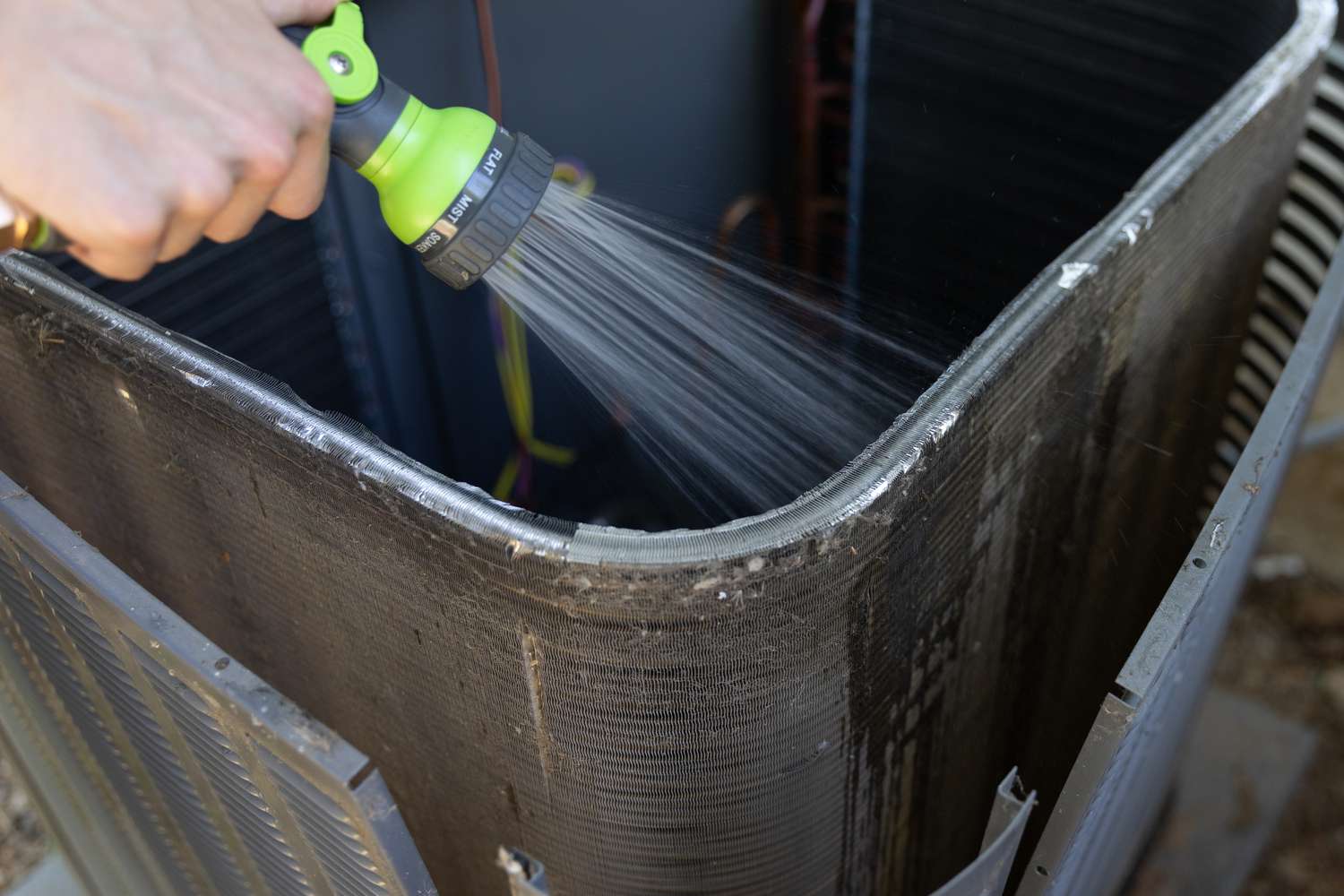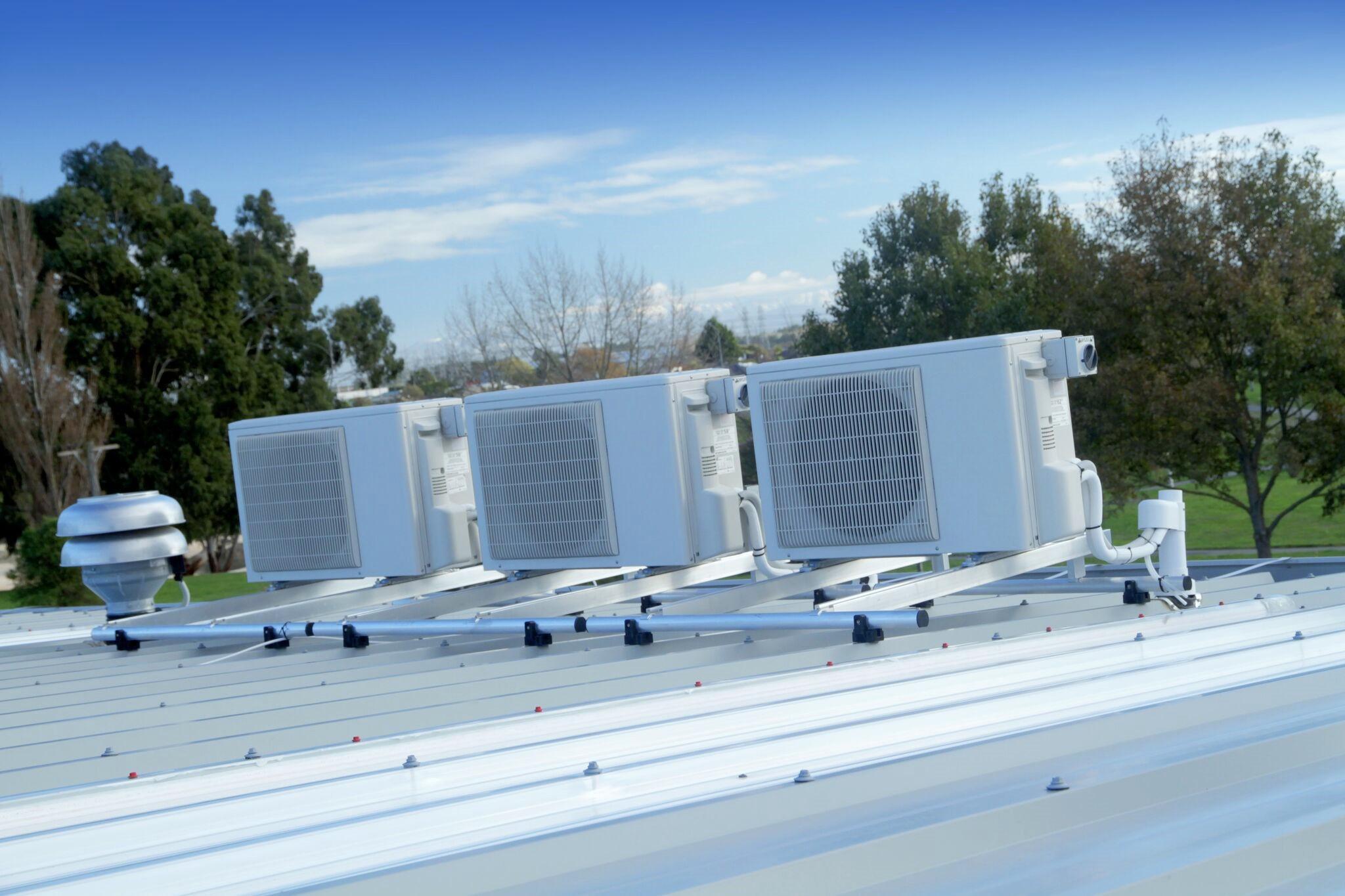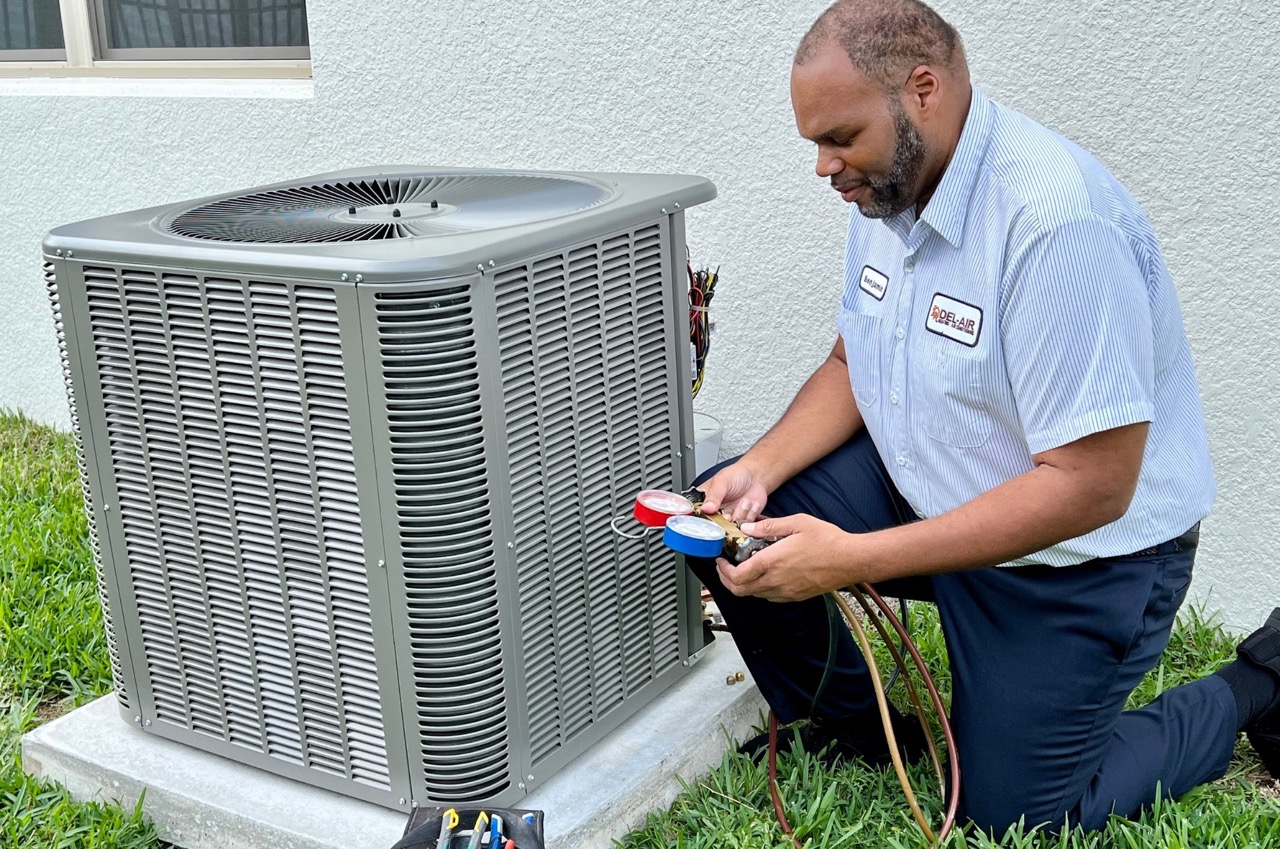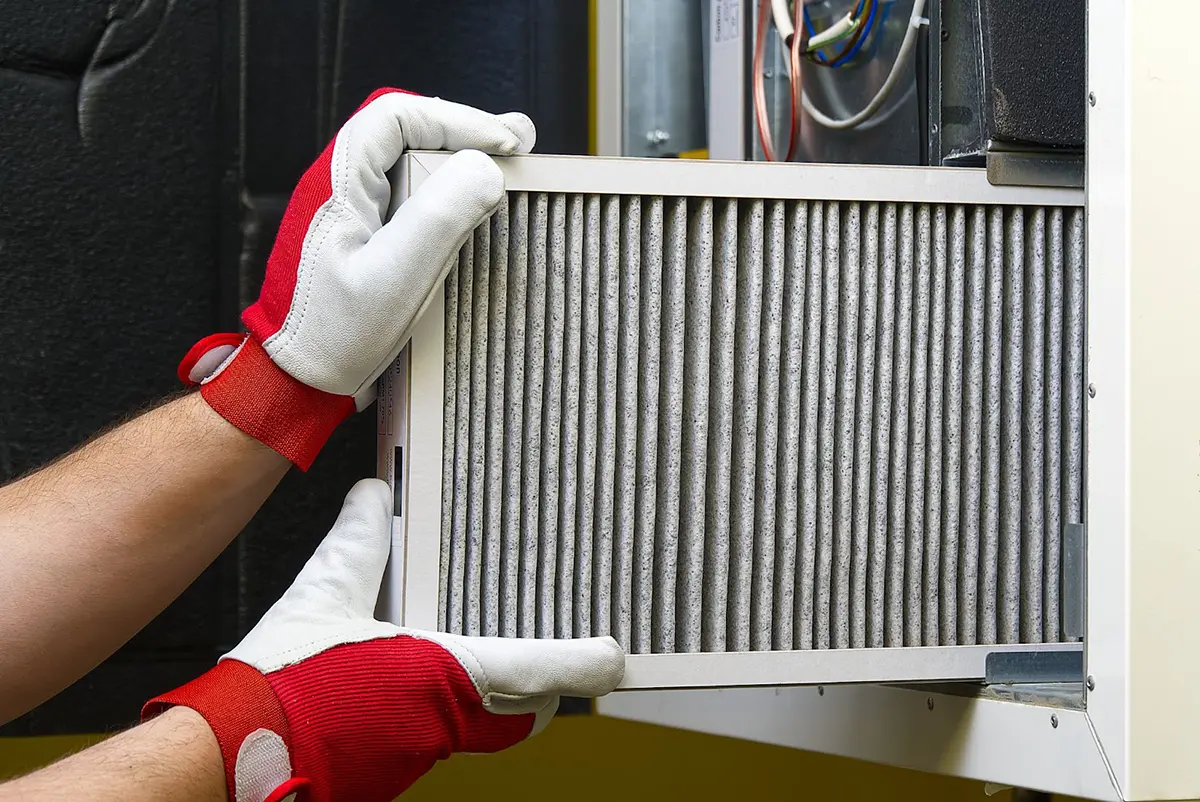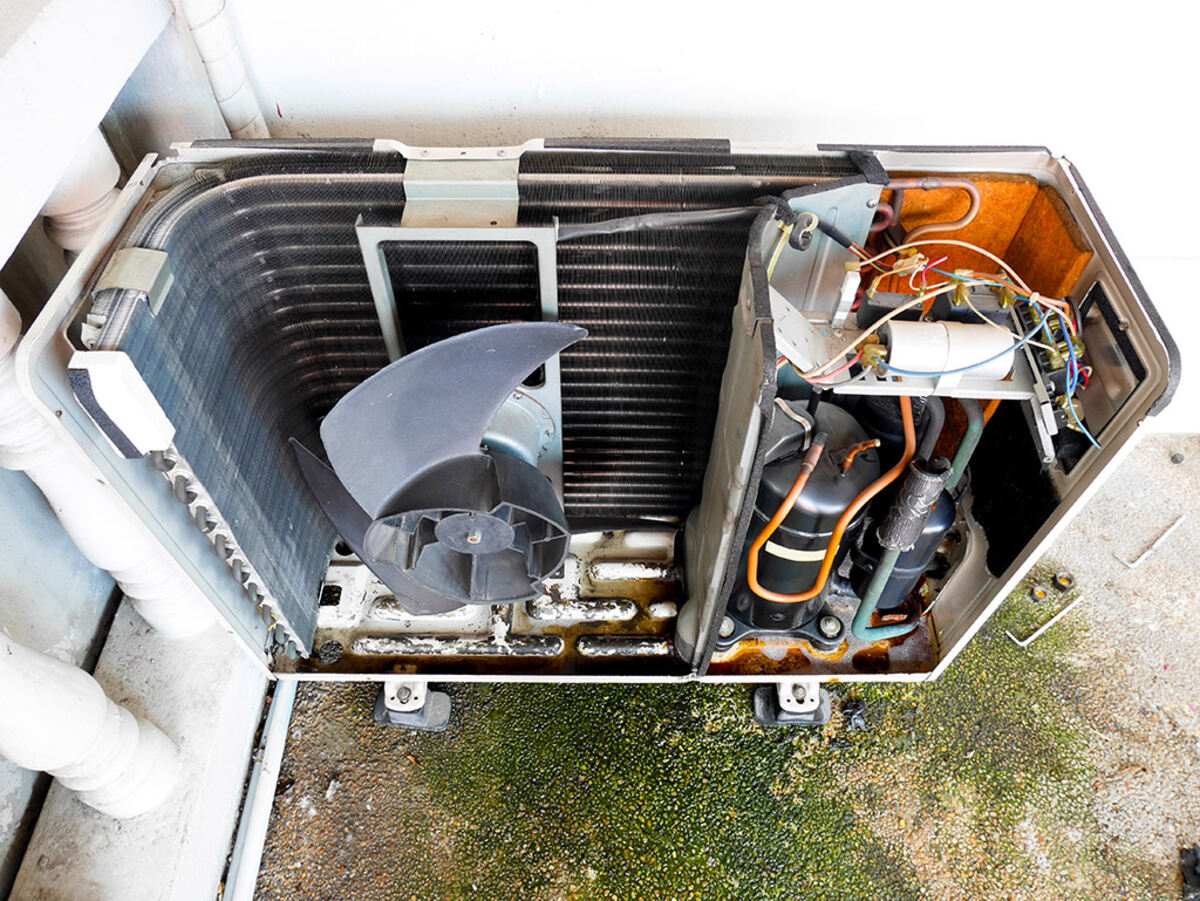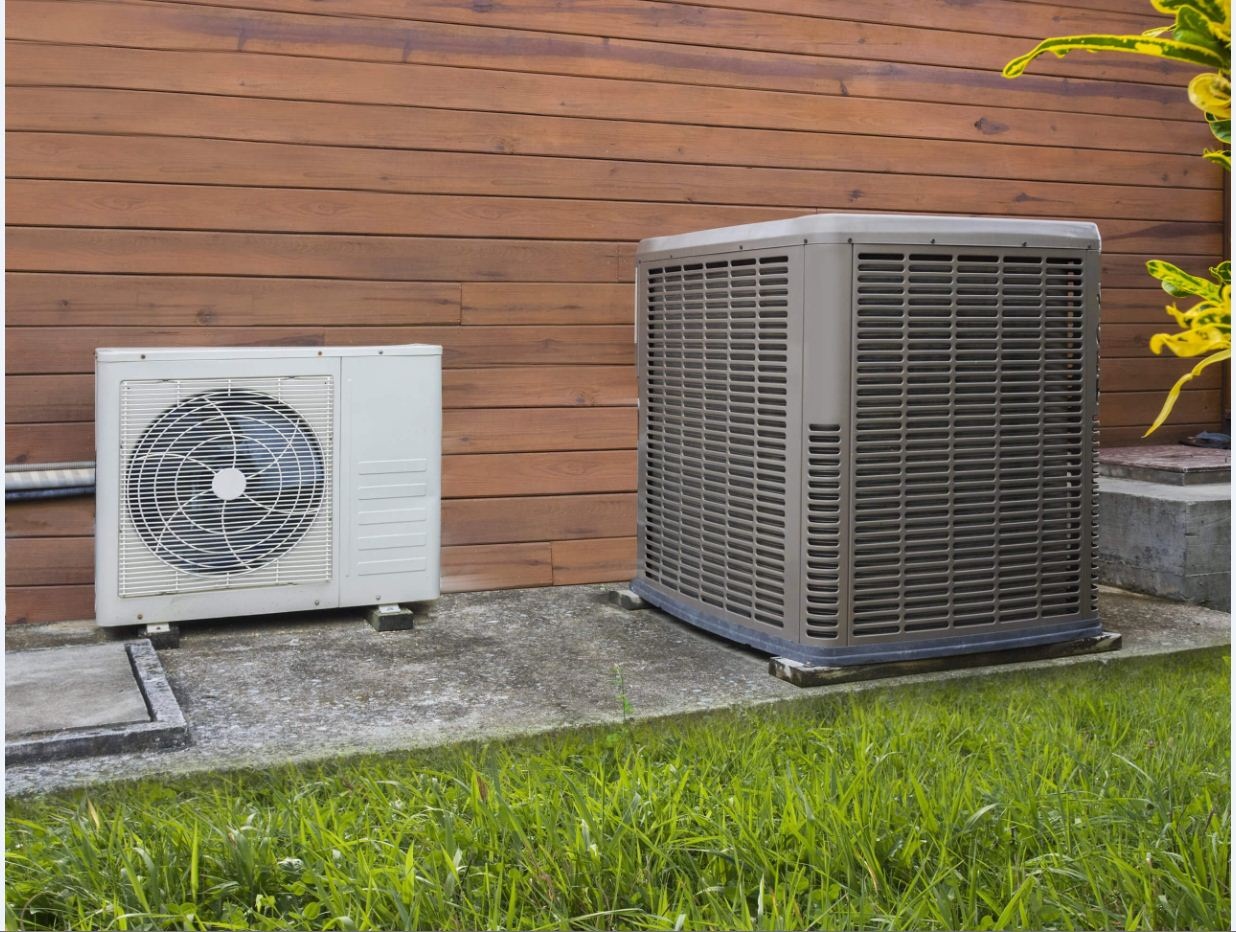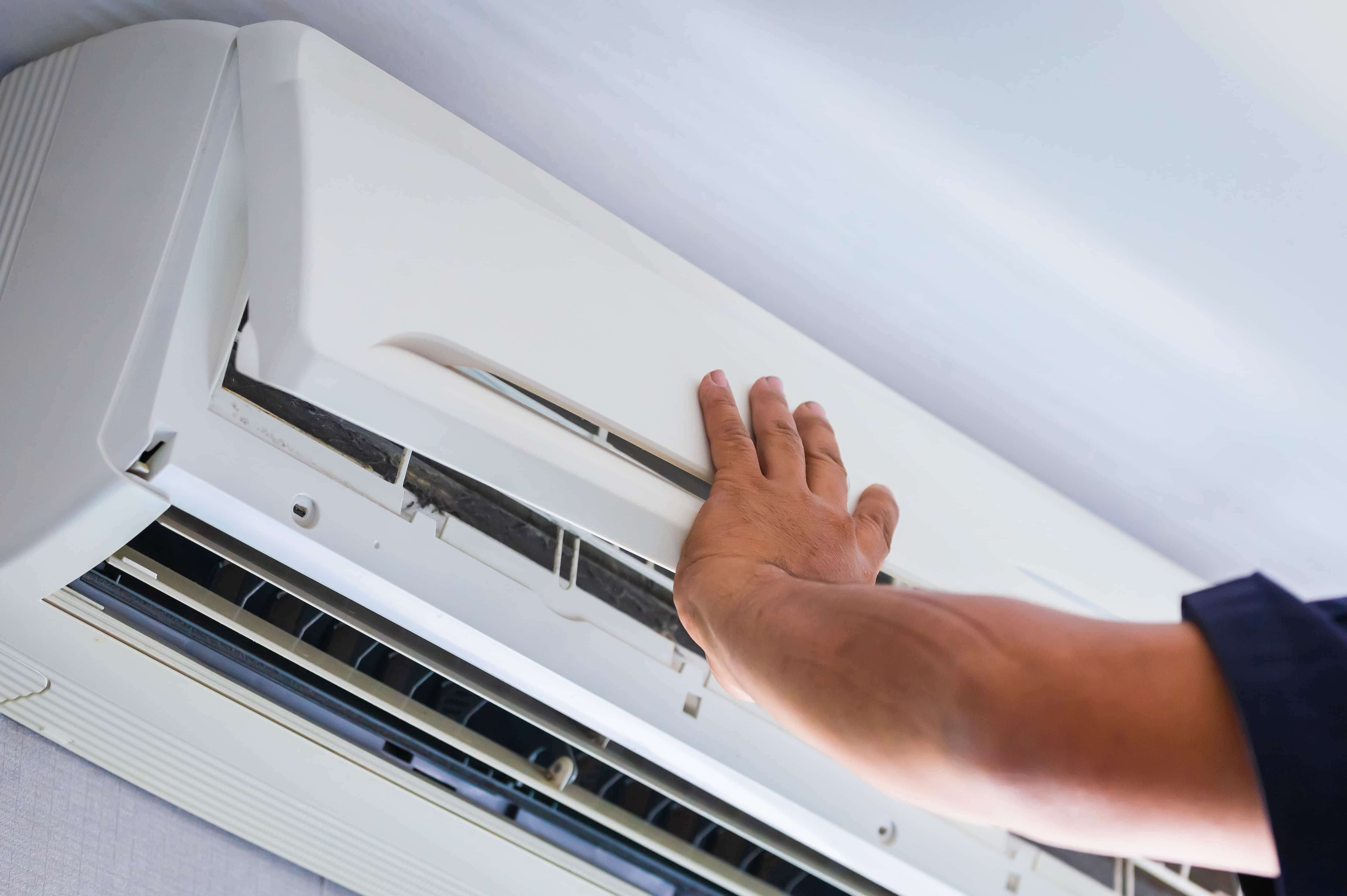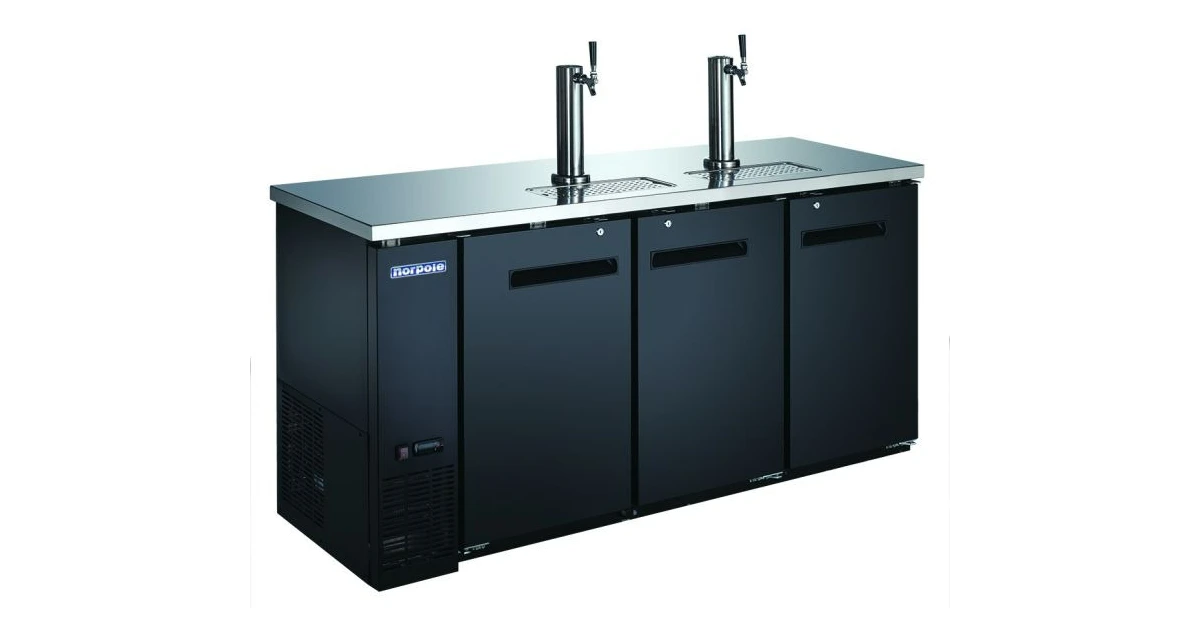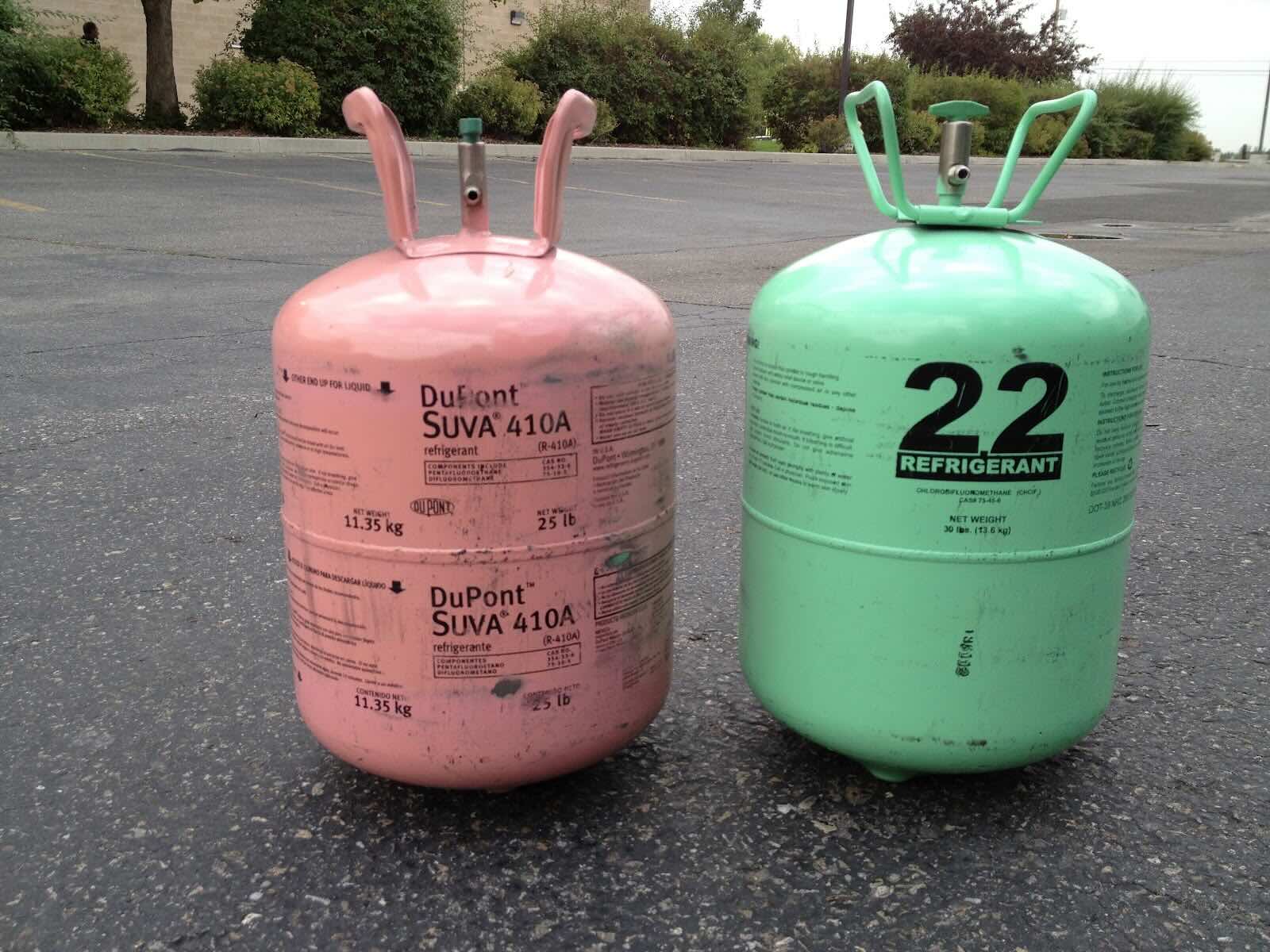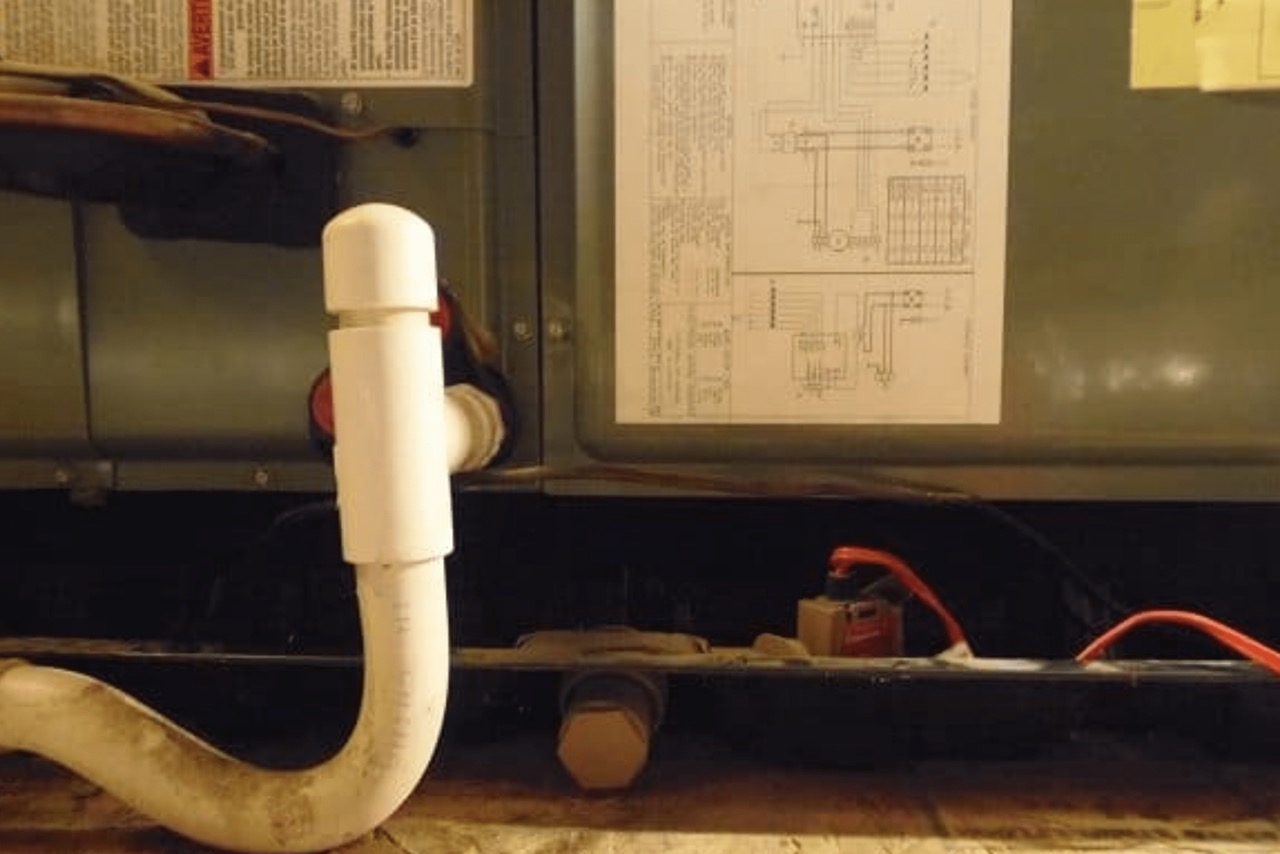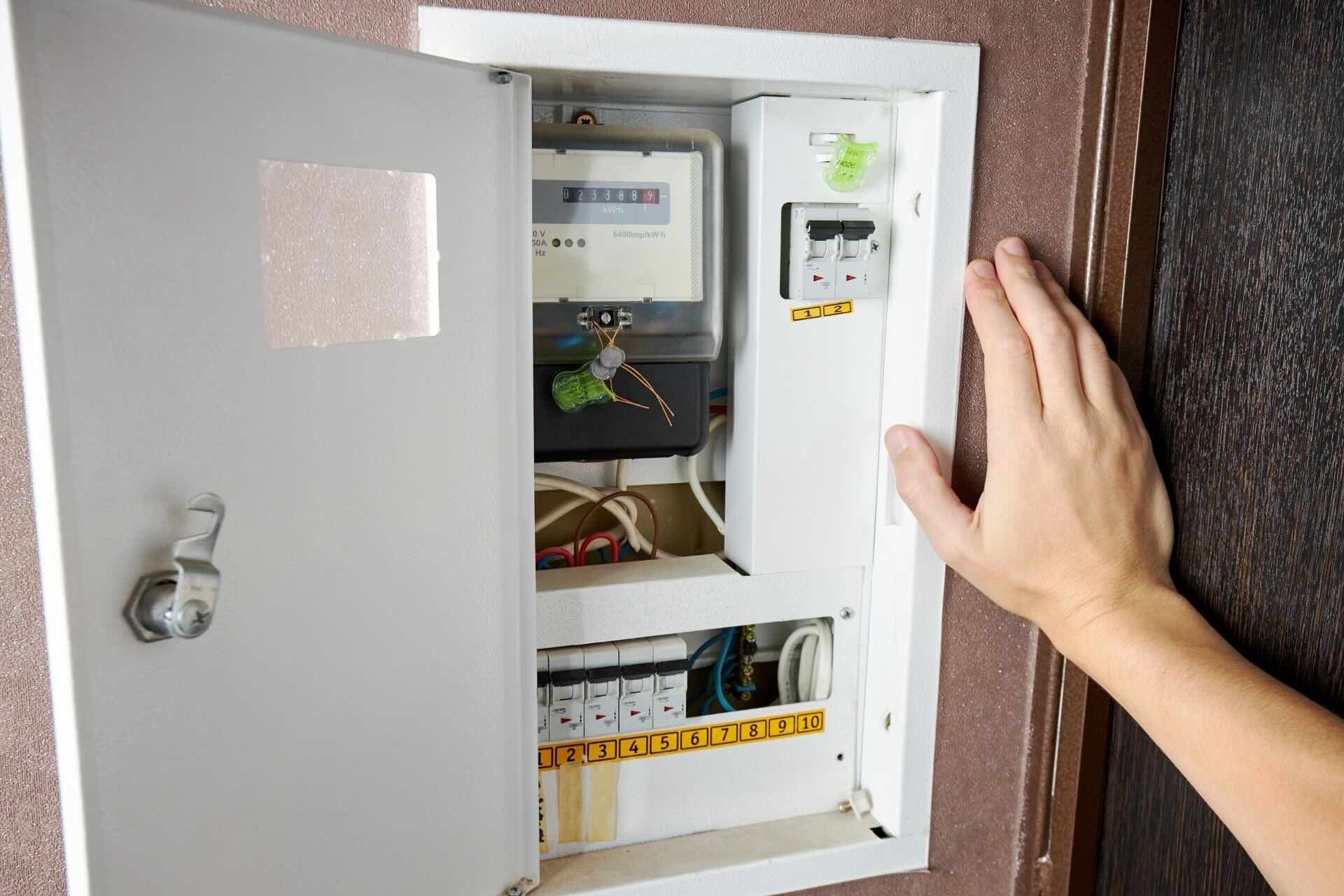Home>Home Maintenance>Where Is The Condensate Pan On An Air Conditioner
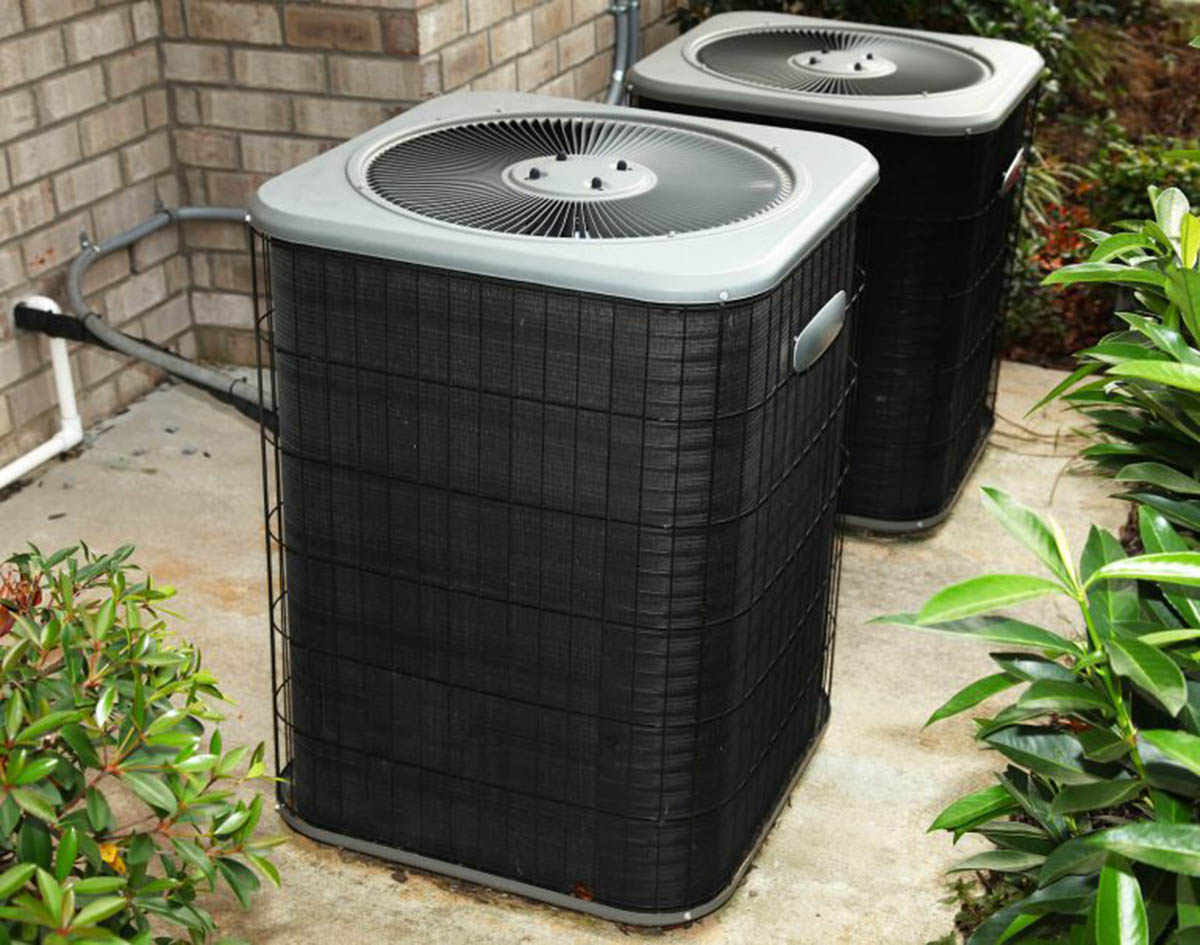

Home Maintenance
Where Is The Condensate Pan On An Air Conditioner
Modified: March 7, 2024
Looking for the condensate pan on your air conditioner? Learn where it is and how to maintain it with our home maintenance tips.
(Many of the links in this article redirect to a specific reviewed product. Your purchase of these products through affiliate links helps to generate commission for Storables.com, at no extra cost. Learn more)
Introduction
Welcome to our comprehensive guide on locating and understanding the condensate pan in an air conditioner. The condensate pan plays a crucial role in the proper functioning of your AC unit, yet many homeowners are unsure of its location and importance. In this article, we will demystify the condensate pan, provide step-by-step instructions on finding it, and offer maintenance tips to ensure its optimal performance. Whether you are a seasoned DIY enthusiast or a homeowner looking to boost your home maintenance knowledge, this article is for you.
Understanding the condensate pan is essential to grasp its significance in the cooling process of an air conditioner. As your AC unit works to cool the air in your home, it pulls moisture from the air, which condenses into water. The condensate pan collects this water and safely drains it away, preventing any damage to your system or your property. Neglecting the condensate pan can lead to issues such as water leaks, mold growth, and even system malfunctions.
Now that we have established the importance of the condensate pan, let’s dive into the process of locating it. While the exact location may vary depending on the type and model of your air conditioner, we will provide general guidelines to help you find it. Understanding the location of the condensate pan will empower you to perform regular maintenance and address any potential issues that may arise.
Key Takeaways:
- The condensate pan in your air conditioner collects water to prevent damage and maintain a healthy indoor environment by reducing humidity levels. Regular maintenance is crucial to ensure its optimal performance.
- Locating and understanding the condensate pan is essential for homeowners. Follow step-by-step guidelines to find it and perform maintenance to prevent water leaks and system malfunctions.
Read more: What Is An Air Conditioner Condenser
Understanding the Condensate Pan
The condensate pan, also known as the drip pan or drain pan, is a vital component of your air conditioning system. Its primary function is to collect the moisture that is extracted from the air during the cooling process. Without a properly functioning condensate pan, the excess water could cause damage to the AC unit and your home.
The condensate pan is typically made of metal or plastic and is located at the bottom of your air conditioner. It is designed to collect the condensation that forms on the evaporator coil, which is responsible for cooling the air. The collected water is then directed through a drain pipe or tube and safely disposed of outside your home or into a designated drainage area.
In addition to preventing water damage, the condensate pan also helps to maintain a healthy indoor environment. By removing excess moisture from the air, it reduces the humidity levels inside your home. This is especially important in humid climates or during the summer months when high humidity can promote mold and mildew growth.
It’s important to note that the condensate pan can become dirty over time, accumulating dust, debris, and even microbial growth. This can hinder its functionality and lead to clogs or leaks. Regular maintenance and cleaning of the condensate pan are essential to ensure its optimal performance and prevent any potential issues.
Now that you have a better understanding of the condensate pan and its role in your air conditioning system, let’s move on to locating it in your home.
Locating the Condensate Pan
Locating the condensate pan in your air conditioner may vary depending on the type and model of your unit. However, there are a few common areas where you can typically find it. Let’s explore some of these locations to help you locate your condensate pan.
1. Indoor Unit: In most split-type air conditioning systems, the condensate pan is located within the indoor unit. This is typically found in the attic, closet, or utility room. Look for a removable panel on the unit that provides access to the internal components. The condensate pan is usually situated near the evaporator coil and drain line.
2. Air Handler: For central air conditioning systems, the condensate pan is commonly located in the air handler unit. The air handler is usually located in the basement, utility room, or a dedicated mechanical room. The condensate pan can be found beneath the evaporator coil, which is housed inside the air handler. Check for a removable panel or access door to locate the condensate pan.
3. Window Units and Portable Air Conditioners: In window units and portable air conditioners, the condensate pan is typically located at the bottom of the unit. It may be visible from the exterior or accessible through a removable panel. Look for a collection tray or drain hole where the condensation is collected.
It’s important to note that some air conditioning systems may have secondary or auxiliary condensate pans. These are typically installed as a backup in case the primary condensate pan overflows or develops a leak. If you’re unable to locate the condensate pan in the main locations mentioned above, check for any secondary pans near the unit, often positioned under the primary pan.
Keep in mind that the specific location of the condensate pan may vary depending on the manufacturer and model of your air conditioner. If you’re unsure or having trouble finding it, it’s recommended to consult your unit’s manual or contact a professional HVAC technician for assistance.
Now that you have a general idea of where to find the condensate pan, let’s move on to a step-by-step guide to help you locate it more precisely.
Step-by-Step Guide to Finding the Condensate Pan
Locating the condensate pan in your air conditioner may seem like a daunting task, especially if you’re not familiar with the inner workings of your unit. However, with a systematic approach, you can easily find it. Follow this step-by-step guide to help you locate the condensate pan:
- Turn off the power: Before you begin, always ensure that the power to your air conditioning unit is turned off. This will prevent any accidents or injuries during the process.
- Locate the air handler or indoor unit: Depending on the type of air conditioning system you have, identify the main unit. This could be in the attic, basement, closet, or utility room.
- Remove access panels: Carefully remove any access panels or covers on the unit. These panels are designed to provide easy access to the internal components, including the condensate pan.
- Inspect the area: Once the panels are removed, visually inspect the unit to locate the evaporator coil. The condensate pan is typically located near the evaporator coil.
- Follow the drain line: Trace the drain line connected to the condensate pan. The drain line is responsible for carrying the collected water away from the pan. Follow the path of the drain line to help you locate the condensate pan.
- Check beneath the evaporator coil: If you’re still having trouble locating the condensate pan, look directly beneath the evaporator coil. The condensate pan is usually positioned beneath the coil and collects the water as it drips down.
- Utilize a flashlight: In some cases, the condensate pan may be obscured from view due to the surrounding components or limited access. Use a flashlight to illuminate the area and help you locate the pan more easily.
Remember, the location of the condensate pan may vary depending on the type and model of your air conditioning system. If you’re unable to find it or have any doubts, it’s best to consult your unit’s manual or seek professional assistance from an HVAC technician.
Now that you have successfully located the condensate pan, let’s move on to the next section: maintenance and cleaning tips to ensure its optimal performance.
The condensate pan on an air conditioner is typically located underneath the evaporator coil. It collects the water that drips from the coil during the cooling process. Be sure to check and clean the pan regularly to prevent overflow and potential water damage.
Maintenance and Cleaning of the Condensate Pan
Maintaining and cleaning the condensate pan is crucial to keep your air conditioning system running smoothly and prevent any potential issues. Follow these maintenance tips to ensure the optimal performance of your condensate pan:
- Regular inspection: Make it a habit to visually inspect the condensate pan periodically. Look for any signs of water accumulation, debris, or microbial growth. Catching these issues early can help prevent clogs and leaks.
- Clean the condensate pan: If you notice any dirt, dust, or buildup in the condensate pan, it’s time to clean it. Remove any debris using a soft brush or cloth. Be gentle to avoid damaging the pan or other components.
- Check the drain line: Ensure that the drain line connected to the condensate pan is clear and free of obstructions. Use a wet-dry vacuum or a pipe brush to remove any buildup or clogs in the drain line. This will ensure proper drainage of the collected water.
- Prevent microbial growth: The condensate pan can be a breeding ground for mold and mildew. To prevent microbial growth, consider using a biocide or algae tablet specifically designed for HVAC systems. These tablets can help inhibit the growth of bacteria and fungi in the condensate pan.
- Inspect the drain pipe: In addition to the condensate pan and drain line, check the drain pipe or tube that carries the water away from the unit. Look for any leaks, cracks, or damage. If you notice any issues, repair or replace the drain pipe as necessary.
- Check the condensate pump (if applicable): Some air conditioning systems may have a condensate pump that helps remove water from the unit. If your system incorporates a condensate pump, ensure that it is functioning properly and inspect it for any signs of damage.
- Schedule professional maintenance: While you can handle basic maintenance tasks, it’s recommended to schedule annual professional maintenance for your air conditioning system. HVAC technicians can thoroughly inspect and clean the condensate pan, as well as address any other potential issues with your unit.
By following these maintenance tips, you can ensure that your condensate pan remains clean and free of obstructions, allowing it to effectively collect and drain the water from your air conditioning system. This will help prevent water leaks, foul odors, and potential damage to your unit and home.
Now let’s move on to troubleshooting common issues that may arise with the condensate pan.
Read more: Where To Donate An Air Conditioner
Troubleshooting Issues with the Condensate Pan
While proper maintenance and regular cleaning of the condensate pan can minimize issues, there can still be occasional problems that arise. Here are some common issues with the condensate pan and their troubleshooting steps:
1. Water Leaks: If you notice water leaking from your air conditioning unit, it could be due to a problem with the condensate pan. First, check if the pan is properly aligned and positioned. If it appears to be crooked or misaligned, adjust it to ensure a snug fit. Additionally, inspect the drain line for any clogs or blockages. Clear out any obstructions, and ensure that the drain line is securely connected to the condensate pan.
2. Overflowing Pan: If the condensate pan is overflowing, it may indicate a clog in the drain line or a malfunctioning float switch. Start by checking the drain line for any obstructions. Clear out any debris or buildup that may be causing the clog. If the problem persists, the float switch may need to be replaced. The float switch is a safety device that shuts off the AC unit when the condensate pan reaches a certain water level. Consult a professional HVAC technician to diagnose and fix the issue.
3. Foul Odors: A foul odor coming from the air conditioning system can be attributed to microbial growth in the condensate pan. To eliminate the odor, clean the condensate pan thoroughly using mild detergent or a solution of water and vinegar. You can also consider using specially formulated condensate pan tablets or biocides to inhibit microbial growth. Ensure proper airflow and ventilation in the area around the unit to prevent moisture buildup and reduce the chances of microbial growth.
4. Damage to the Pan: If the condensate pan shows signs of damage such as cracks or holes, it may need to be replaced. A damaged pan will not effectively collect and drain the water, potentially leading to water leaks and other issues. Contact a professional HVAC technician to assess the extent of the damage and install a new condensate pan if necessary.
5. Inadequate Drainage: If water is not properly draining from the condensate pan, it may be due to a clogged or improperly installed drain line. Check for any blockages in the drain line and clear them out. Ensure that the drain line is pitched downward and free of any kinks or twists. If the problem persists, consult a professional technician to inspect the drain line and resolve any issues.
Remember, if you’re unsure about troubleshooting or repairing issues with the condensate pan, it’s always best to seek the assistance of a qualified HVAC technician. They have the knowledge and expertise to diagnose and resolve any problems with your air conditioning system.
Now that you are aware of common condensate pan issues and their troubleshooting steps, let’s conclude our comprehensive guide.
Conclusion
Congratulations! You have now gained a comprehensive understanding of the condensate pan in your air conditioning system. We have covered everything from the importance and role of the condensate pan to locating it within your unit. Additionally, we provided a step-by-step guide to help you find the condensate pan and discussed the maintenance and cleaning steps to keep it in optimal condition. Lastly, we touched on troubleshooting common issues with the condensate pan.
By familiarizing yourself with the condensate pan and implementing regular maintenance practices, you can prevent water leaks, maintain healthy humidity levels, and ensure the smooth operation of your air conditioning system. Remember to inspect the condensate pan periodically, clean it when necessary, and check for any clogs or damage in the drain line. If you encounter any issues that you are unsure how to resolve, it’s always best to consult a professional HVAC technician.
Now armed with this knowledge, you can confidently take care of your condensate pan and contribute to the longevity and efficiency of your air conditioning system. By prioritizing maintenance and troubleshooting early, you can enjoy a comfortable and cool indoor environment while avoiding costly repairs or replacements.
Thank you for joining us on this informative journey to understand the condensate pan and its significance in your home. We hope this guide has been helpful and that you feel empowered to take control of your air conditioning system’s maintenance needs. Stay cool!
Frequently Asked Questions about Where Is The Condensate Pan On An Air Conditioner
Was this page helpful?
At Storables.com, we guarantee accurate and reliable information. Our content, validated by Expert Board Contributors, is crafted following stringent Editorial Policies. We're committed to providing you with well-researched, expert-backed insights for all your informational needs.


